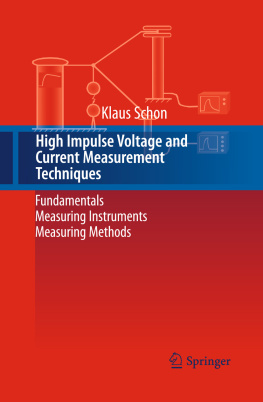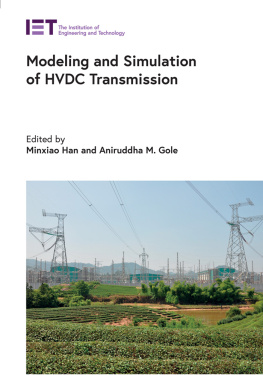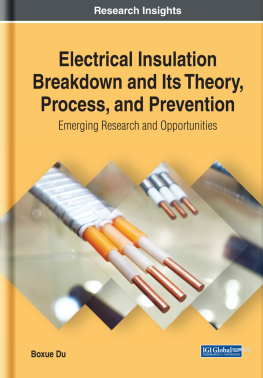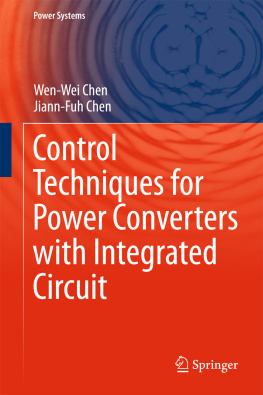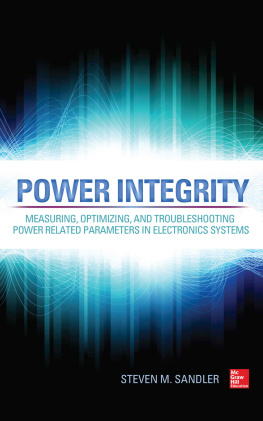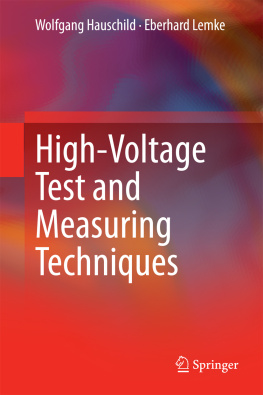Klaus Schon High Impulse Voltage and Current Measurement Techniques 2014 Fundamentals Measuring Instruments Measuring Methods 10.1007/978-3-319-00378-8_1 Springer International Publishing Switzerland 2013
1. Introduction
Abstract
In power supply networks for transmission and distribution of electrical energy at high voltage, transient voltages of more than 1 MV and transient currents in the range of 100 kA can be caused by lightning strokes, short-circuits or switching operations. Because of their high magnitudes and short rise times ranging from a fraction of a microsecond to milliseconds, they cause enhanced stressing of the insulation of the equipment concerned. All high-voltage and power equipments are therefore subjected to acceptance tests with standardised high impulse test voltages or currents before they are put into operation. High impulse voltages and currents are also used for applications in various areas of physics and engineering, e.g., plasma physics, electrical spot-welding, electro-shock weapons, etc. A well-founded measurement technique is essential in all cases, be it for preventing the under- or over-stressing of the test object or for guaranteeing the quality of an application. At the forefront is always the measurement of the impulse parameters responsible for the stressing or the quality control. Measuring systems used for testing must be verified with regard to their accuracy. In this context, concepts and contents like quality control, traceable calibration, uncertainty of measurement, internationally recognised test specifications, accredited testing and calibration laboratories, etc., play an important role. The present book deals with the fundamentals of high impulse voltage and current measurement techniques and new developments and requirements in the fields of IEC test specifications, digital instrumentation and data processing.
In power supply networks for transmission and distribution of electrical energy at high voltages, transient overvoltages with peak values of more than 1 MV could occur, which are very much higher than the maximal operating voltages in Europe. The origin of these overvoltages lies in direct or indirect lightning strokes to overhead transmission lines or outdoor switching stations, short-circuits or flashovers due to breakdown of electrical insulation, switching operations in substations and the operation of lightning arrestors. These transient voltages have rise times predominantly in the range of microseconds to milliseconds. During flashover or breakdown of insulation systems and during operation of lightning arrestors, the voltage collapse can take place very fast in less than 1 s. Extremely short fall-times in the range of a few 100 ns down to 1 ns and still lower, occur in switching and breakdown processes in gas-insulated systems. Even in low-voltage networks, transient voltages of more than 1 kV can appear which can affect the functioning of the installed electrical equipments or even destroy them.
Transient overvoltages result in enhanced stressing of the insulation of the equipments in power supply networks for very short durations. All these equipments are therefore subjected to acceptance tests with impulse test voltages before they are inducted into the system; these test voltages are appropriately matched with the overvoltages appearing in the supply network. The magnitude of the internationally standardised test voltages corresponds to the designed operating voltage of the equipments. They are further differentiated based on their temporal behaviour. Electromagnetic fields for compatibility tests on electronic equipments and systems can be generated with very steeply rising impulse voltages applied to plateplate electrodes or strip-like electrode arrangements. Even the electromagnetic pulse released by a nuclear explosion at very great altitude can be simulated in this manner.
Transient overvoltages are very often the cause of transient equalising currents. Thus, as a direct or indirect effect of lightning strokes, fast varying currents with peak values in the range of 100 kA and rise times of 1 s can occur. If the lightning stroke occurs on an overhead transmission line, the current pulses travel to either side of the line and cause high transient voltages on the equipments connected at the terminals; these overvoltages get then superposed on the AC system voltage of the supply network. Overvoltage arrestors are therefore installed for protection of the system. The lines at the operating AC voltage can also discharge when the arrestor operates. The arrestors are then stressed by an approximately rectangular current pulse of duration in the range of 1 ms. Analogous to impulse test voltages, all power apparatus are subjected to acceptance tests with impulse test currents. Electrical, mechanical and thermal stresses which might occur during practical operations are simulated by these in a test laboratory. Short-time currents at supply frequency, appearing due to short-circuits in the supply system and lasting only for a few cycles, are not reckoned as impulse currents in a strict sense. These relatively slow transients could possess a decreasing DC component and then attain peak values of the order of 300 kA or more.
High impulse-type voltages and currents with rise times in the microsecond or nanosecond range appear even in other areas of physics and engineering or are of use for certain applications. In plasma physics, extremely high magnetic fields for short-duration entrapment of plasmas are generated with them. In electrical spot-welding, impulse currents attain peak values of 200 kA. Electronic ignition systems for combustion engines generate impulse voltages with peak values of 30 kV maximum. In power electronics, impulse voltages and currents of several tens of kV and up to 10 kA are encountered or would be required for tests, e.g., for solar modules. Electricity meters are tested with impulse currents comprising of supply-frequency sinusoidal half-waves with amplitudes of several kiloamperes. In medical technology, by transforming to acoustical impulse waves, shattering of kidney stones, gallbladder stones as well as calcium layer deposits in joints is achieved. Functioning of electro-shock weapons is based on voltage pulses which paralyse the nervous system of the target for a limited time. Finally, mention should be made of the various applications during investigations on electromagnetic compatibility of electronic equipments up to the level of very complex systems, e.g., like those represented by airplanes.
A well-founded measurement technique is essential in all applications of impulse voltages and impulse currents, be it because of preventing the understressing or overstressing of the equipment or the test object or because the quality of an application, e.g., in electrical spot-welding, must be guaranteed. At the forefront is always the measurement of the impulse parameters of the impulse voltage or the impulse current responsible for the stresses or the quality. Measuring equipments used for testing must be verified with regard to their accuracy of measurement. In this connection, concepts and contents like quality control, calibration, measurement uncertainty, internationally recognised test specifications, accredited testing and calibration laboratories, etc., have an important role to play.
High-voltage and power engineering, including the associated measurement techniques, are discussed in a large number of literature references. Summarising presentations with numerous citations, besides those from the early beginnings of impulse voltage and impulse current measurement techniques, can be found in technical books [], some of which are out of print or available only as unchanged reprint of older editions. The present book has thus originated with the intention of combining the fundamentals of measurement techniques that are current with new developments in the fields of equipment technology, test specifications and data processing.

